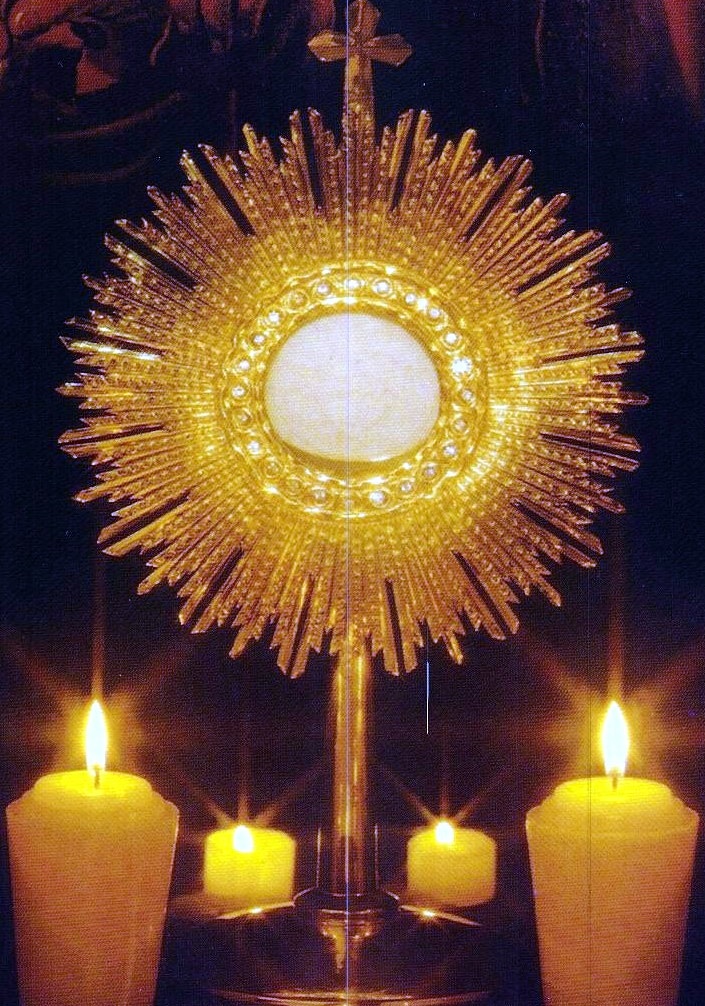Santorum is a "wafer" madness believer!
 There is much to discuss in the feature story on Rick Santorum's faith that has been served up by The New York Times. There is lots of interesting information, some questionable information and then a pretty large chunk of missing information. However, I think many traditional Catholic believers will start reading this piece -- after all, it's the story of how one normal American Catholic turned into a traditional Roman Catholic -- and then find themselves stuck right about here.
There is much to discuss in the feature story on Rick Santorum's faith that has been served up by The New York Times. There is lots of interesting information, some questionable information and then a pretty large chunk of missing information. However, I think many traditional Catholic believers will start reading this piece -- after all, it's the story of how one normal American Catholic turned into a traditional Roman Catholic -- and then find themselves stuck right about here.
As members of St. Catherine of Siena, a parish here in the wealthy Northern Virginia suburb of Great Falls, the Santorums are immersed in a community where large families are not uncommon and many mothers leave behind careers to dedicate themselves to child-rearing, as Mrs. Santorum has. Mr. Santorum has been on the church roster as a lector, reading Scripture from the pulpit.
The parish is known for its Washington luminaries -- Justice Antonin Scalia of the Supreme Court is a member -- as well as its spiritual ardor. Mass is offered in Latin every Sunday at noon -- most parishes have Mass only in English -- and each Wednesday parishioners take turns praying nonstop for 24 hours before a consecrated communion wafer, a demanding practice known as Eucharistic adoration.
First of all, I think it would be more accurate to say that parishioners take part in a 24-hour cycle of unbroken prayers, with most participating for an hour -- a short period of devotion that, for a traditional believer in a number of different traditions, would not be all that "demanding." The wording in the story is a bit unclear. What does it mean to "take turns praying nonstop"?
However, the fingernails-on-chalkboard moment in this passage for many readers will be the return of the W-word -- "wafer."
Several years ago, there was a lively GetReligion comments-page discussion of this term that is worth revisiting. Here is how I started that "wafer madness" post:
There is no question what the Roman Catholic Church calls the holy bread that is consecrated during the Mass. It is called the “host.” Anyone who knows anything about Catholic liturgy knows this.
Now, how do you describe or define the host? Those seeking to be reverent tend to call it “consecrated bread.”
The problem, of course, is that the special bread used in Western Rite services is not simply unleavened bread. As the old saying goes, there are two acts of faith involved in meditating on the host during a Mass. The first is to believe that it is the Body of Christ. The second is to believe that it is, in fact, bread.
It does not take many words to explain what the word "host" means in this context. Why do journalists decline to use the right term and choose, instead, to push the "wafer" button? I honestly do not know.
However, the reference to Eucharistic adoration would seem to be key moment in this timely piece, since the thesis of the article appears to be that Catholics who actually practice the doctrines of the Catholic faith are not really Catholics. They are strange Catholics, as opposed to being normal Catholics. And what is a normal Catholic? Check this hint:
Unlike Catholics who believe that church doctrine should adapt to changing times and needs, the Santorums believe in a highly traditional Catholicism that adheres fully to what scholars call “the teaching authority” of the pope and his bishops.
Of course, the essence of Catholicism is that the teaching authority of the bishops is, in fact, the mechanism through which church tradition is applied to the unique challenges of the age. One does not have to agree with that fact in order to understand it and to write about these beliefs in an accurate and fair manner. The people of God play a crucial role in the Catholic faith, but there is no question that in Catholicism the pope and the bishops are the teachers and defenders of the faith handed down through the ages.
The thread running through this news story, it seems to me, is that Catholics who actually try to live out this faith in their day-to-day lives (especially if they are living public lives) are strange and a bit dangerous. We have seen the following question implied in the past (but not explicitly voiced in this story): What do you call a Catholic who actually believes the doctrines of his or her Church? You call them an "evangelical." What do you call a Catholic who does not believe some or many of the doctrines of his or her Church? They are called "Catholics."
The story includes some increasingly familiar information about the Santorums, such as the fact that Karen Santorum was once romantically involved with Dr. Tom Allen, the founder of Pittsburgh’s first abortion clinic, during a period in her life when she had broken with the Catholic faith. She returned to the faith after meeting her future husband.
 This will not surprise anyone who knows anything about this family and its history.
This will not surprise anyone who knows anything about this family and its history.
The Times team also does a pretty good job of noting quite a few elements of the senator's career that were shaped by this faith, including some that -- for mainstream journalists -- may not seem that obvious. Thus, readers are told:
Mr. Santorum’s religious beliefs would come to infuse every aspect of his political life -- not just his views on social issues like abortion, but also his work to overhaul the welfare system, increase financing to fight AIDS in Africa and promote religious freedom. “He is passionate about all of these issues, which all come from a deep faith,” said Mike DeWine, the Ohio attorney general, who served with Mr. Santorum in the Senate.
You could add many other pieces of bipartisan legislation that emerged from the offices of Santorum and Sen. Joseph Lieberman on hunger, education, aid for children, etc.
There are many other details to discuss and I am sure some will surface in the comments pages.
However, I was surprised that the Times did not dwell more on the following angle:
Mr. Santorum has been a supporter of Regnum Christi, the lay wing of a conservative, cultish order of priests known as the Legion of Christ. In 2003, he was the keynote speaker at a Regnum Christi event in Chicago that drew protesters because the group’s charismatic founder, who had spent years denying that he had sexually abused seminarians, was scheduled to share the podium.
The founder, the Rev. Marcial Maciel, did not show up, but critics faulted Mr. Santorum for agreeing to appear at the group’s forum. “He was certainly lending them legitimacy,” said Jason Berry, a documentary filmmaker and the author of a book about Father Maciel.
And that's all we get? I am sure that critics of Santorum would like to know more at this point. However, the fall of Father Marcial Maciel and the testing of Regnum Christi was not a strictly liberal Catholics vs. conservative Catholics affair. This is one case in which many people were supporters of this controversial group and its founder, yet changed their views quickly or at other points before the final act.
It simply is not enough to say that "Santorum has been a supporter of Regnum Christi." Once that door is open, readers deserve to know much more. This is a point on which traditionalist Catholics, as well as progressives, would appreciate a bit of grilling for Santorum. As one GetReligion reader noted:
... Maciel wasn't just alleged to have committed sexual abuse, the Vatican found him guilty of being a general sociopath, albeit after Santorum's appearance in 2003! What does Santorum do with Regnum Christi now that the Legion's founder is in disgrace?
A good and valid question, one that I too am surprised that the Times didn't pursue.
What are the other crucial journalistic pluses or minuses in this piece? Please focus on the journalism, folks.